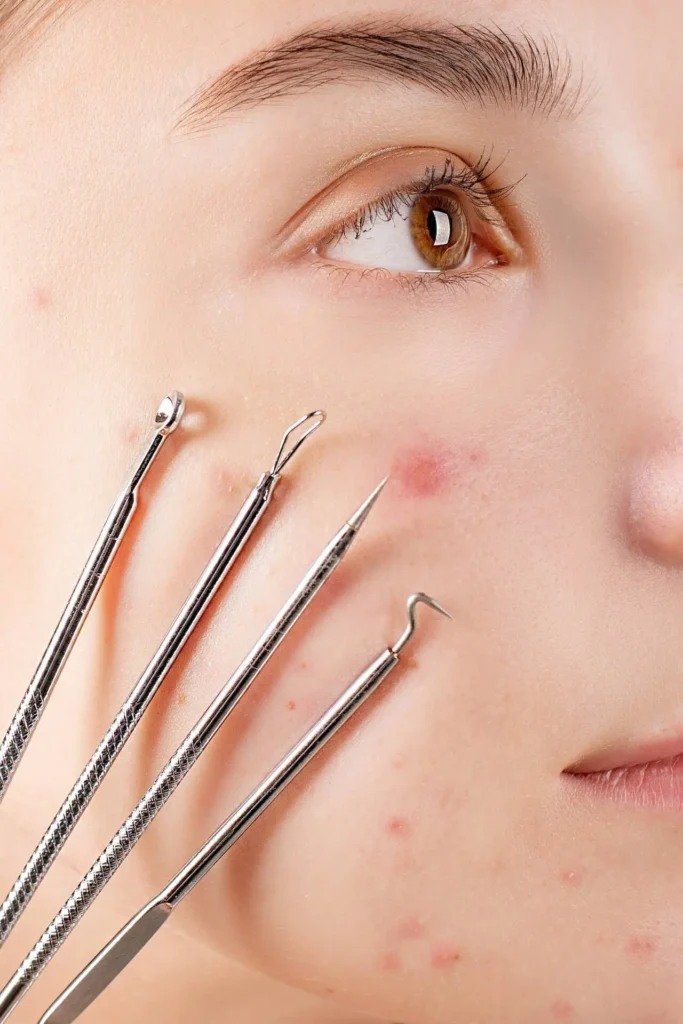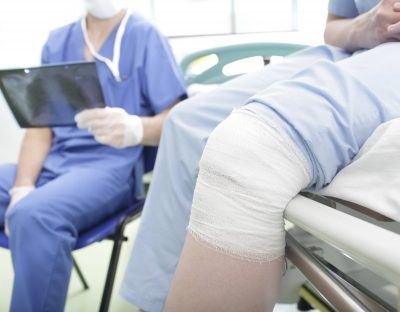Millions of people all over the world suffer from acne. Although acne itself is usually short-lived, the scars it leaves behind can often stick around for years. Many people’s self-esteem and general happiness are negatively impacted by the existence of such scars.
The good news is that acne scars can be treated and the skin improved in several ways. Here, we’ll go over 15 of the best ways to deal with acne scars, from at-home cures to professional surgeries. There is a treatment available that can help you get brighter, smoother skin regardless of how severe your scarring is.
Types of Acne Scars
Many people, especially teenagers, suffer from acne, an extremely widespread skin disorder. Some people may be left with acne scars even though their acne was treated and cleared up.
The best treatment for acne scars can be determined by first learning about the various types of acne scars that exist and their associated sizes, shapes, and appearances. Acne scars can be divided into three categories: atrophic, hypertrophic, and pigmented.

1. Atrophic Scars
Most acne scars are atrophic, which results from collagen breakdown throughout the healing process. Skin elasticity and firmness are preserved by the protein collagen, which is naturally present in the skin.
Acne can cause atrophic scars, which are depressions or indentations in the skin caused by a lack of collagen. Three subtypes of atrophic scars have been identified.
- Ice pick scars: Extending into the deeper layers of skin, these scars are narrow, deep, and marked. The impressions are similar to what an ice pick would leave.
- Boxcar scars: Scars of this type are often square or rectangular in shape and have a sharp edge.
- Rolling scars: Tethering of the skin to the underlying tissue results in the appearance of these scars as wave-like undulations on the skin.
2. Hypertrophic Scars
Hypertrophic scars, in contrast to atrophic scars, result from an excess of collagen formation during the healing process. Scars that are red or pink in hue and elevated due to excess collagen.
Hypertrophic scars are more difficult to heal and may be uncomfortable to the touch. These scars are more common in people of color and can appear in people with severe acne.
3. Pigmentation Scars
Acne often leaves behind discoloration of the skin, commonly known as pigmentation scars or post-inflammatory hyperpigmentation. Overproduction of melanin in reaction to inflammation is what causes these scars, which manifest as dark patches or spots. Scars that result in discoloration can be further classified into two types:
- Post-inflammatory erythema: Reddish or pink scars result from an increase in blood flow to the injured area.
- Post-inflammatory hyperpigmentation: Scars typically appear red or pink because of the increased blood flow to the wounded area.
15 Effective Ways to Get Rid of Acne Scars
A. Topical Treatments
Scars left behind by acne can be annoying and embarrassing, but there are effective treatments available. Using therapies applied directly to the skin is one option.
Products like these can be used to diminish the look of acne scars by being administered directly to the skin. These are five topically applied remedies for acne scars:

1. Retinoids
Common acne treatments include retinoids, a class of vitamin A derivatives. Acne scars may be less noticeable after using these products because they increase cell turnover and stimulate collagen formation.
In addition to preventing fresh acne from emerging, retinoids can help clear out clogged pores. Tretinoin, adapalene, and tazarotene are just a few examples of retinoids used to treat acne scars.
2. Vitamin C
Acne scars and dull skin can both benefit from vitamin C’s anti-oxidant properties. It reduces pigmentation scarring by preventing the synthesis of melanin.
Vitamin C’s ability to increase collagen formation is another way it benefits the skin’s appearance. Vitamin C serums and lotions can be used topically, and for optimal benefits, they should be used every day.
3. Niacinamide
Niacinamide, or vitamin B3, is a type of vitamin that can be dissolved in water and used topically for its anti-inflammatory and skin-lightening effects. It’s useful for minimizing the appearance of acne scars’ redness and discoloration.
Moreover, niacinamide has been shown to enhance the skin’s barrier function, protecting it from additional harm. Niacinamide can be applied topically in a wide range of serums and lotions.
4. Alpha Hydroxy Acids (AHAs)
Fruit and dairy products are the primary sources of the AHA family of acids. Acne scars may be less noticeable after using them because they exfoliate the skin’s surface.
The skin’s texture can be enhanced by the use of AHAs because they promote collagen formation. Acne scars can be treated with alpha hydroxy acids like glycolic acid and lactic acid.
5. Beta Hydroxy Acids (BHAs)
Salicylic acid, or beta-hydroxy acids (BHAs), is another type of acid that can help diminish the look of acne scars. To reduce the likelihood of future acne breakouts, use a product containing beta hydroxy acid (BHA) to exfoliate the interior of your pores.
Acne scar irritation and redness can be diminished by using BHAs. In addition to various topical therapies for acne scars, BHAs are commonly used in acne treatments.
B. In-Office Treatments
Acne scars can be effectively removed using a variety of in-office procedures in addition to topical remedies. More dramatic outcomes are possible with these procedures, which are often administered by a dermatologist or aesthetician. Acne scars can be effectively treated in the office by any one of the following five methods:

1. Chemical Peels
Chemical peels remove the outermost layer of skin by applying a solution directly to the skin. Increasing cell turnover and encouraging collagen formation, can help to lessen the visual impact of acne scars.
Chemical peels can be adjusted based on the depth and kind of scarring being treated. Face, neck, chest, and even hands can all get in on the action.
2. Microneedling
In micro-needling, a device is used to cause tiny punctures in the skin. This triggers the body’s natural wound-healing response and boosts collagen synthesis.
Acne scars can be less noticeable after micro-needling treatment since the skin’s texture is enhanced. It can also be combined with other therapies to boost its effectiveness, such as platelet-rich plasma (PRP) therapy.
3. Laser Treatment
The skin is the target of the high-energy light beam used in laser treatment. Because it increases cell turnover and collagen formation, it helps make acne scars less noticeable.
Both ablative and non-ablative lasers are used in the medical field to treat various conditions. Scars and skin types can be taken into account when planning a laser treatment plan.
4. Dermal Fillers
Acne scars can be concealed by using dermal fillers, which are injectable gels designed to fill in the depressions left by acne scars. They have the potential to work instantly and maintain their effects for up to a year.
Hyaluronic acid and collagen are two examples of materials that can be used to create dermal fillers. They are effective for treating both atrophic and rolling scars caused by acne.
5. Cryotherapy
The skin is frozen with liquid nitrogen in cryotherapy. As the skin peels and renews itself, the appearance of acne scars may be diminished.
Any acne scars, including the more severe hypertrophic ones, can be treated with cryotherapy. It can be done in a matter of minutes with minimal discomfort, right in the doctor’s office.
C. Home Remedies
Some people prefer to try home remedies for acne scars rather than visit a dermatologist for in-office or topical treatments.
Although these therapies may not have the same level of scientific evidence as medical treatments, they can be a safe and inexpensive option to reduce the visibility of acne scars. Here are five tried-and-true home treatments for acne scars:
1. Aloe vera
The anti-inflammatory and calming effects of aloe vera are well-known. Aloe vera gel applied to acne scars has been shown to lessen inflammation and speed up the healing process. Acne scars may be less noticeable after using aloe vera since it helps to keep the skin hydrated and moisturized.
2. Honey
Because of its antibacterial and anti-inflammatory properties, honey is often recommended for treating acne scars. Raw honey’s moisturizing and nourishing effects on the skin aid healing and lessen the visibility of scars when applied topically.
3. Tea Tree Oil
Acne-causing bacteria can be combated with the use of tea tree oil, a natural antiseptic. Acne scars can benefit from the application of tea tree oil, which has anti-inflammatory and wound-healing properties. To prevent skin irritation, tea tree oil should be diluted with a carrier oil like coconut oil before being used topically.
4. Turmeric
Anti-inflammatory effects can be found in spice turmeric. Acne scars can benefit from having a paste of turmeric and water applied to them. Turmeric can leave a mark on the skin, therefore it’s crucial to wash it off after use.
5. Lemon juice
Acne scars can be diminished in appearance by using lemon juice, which acts as a natural exfoliator. Lemon juice has been shown to increase cell turnover and collagen formation after being applied to the skin. However, undiluted lemon juice has the potential to irritate the skin, therefore it should be mixed with water before being applied.
Prevention
Although acne scars are challenging to heal, they can be avoided through several methods. To avoid developing acne scars, try the following measures:
1. Advice for Avoiding Permanent Acne Scars
- Do not pick at, squeeze, or pop zits because doing so might cause scarring.
- Scarring can be minimized if acne is treated early and successfully.
- If your skin is prone to breakouts, try using mild, non-comedogenic cleansers.
- The sun’s UV rays can darken acne scars, therefore it’s important to always wear sunscreen with an SPF of at least 30.
- Tight clothing or jewelry can irritate the skin and should be avoided.
- Scrubbing too vigorously or using overly abrasive cleansers can cause skin damage and increase the likelihood of scarring.
2. Modifying Your Routine Can Help You Avoid Acne Scars
- Fruits, vegetables, and lean proteins make up the bulk of a healthy diet.
- Maintain your body’s water balance by consuming lots of water all day long.
- Regular exercise can increase blood flow, which in turn benefits skin health.
- Because stress can worsen acne and cause scarring, it’s important to practice stress management methods like meditation and yoga.
- Avoid damaging habits like smoking cigarettes and drinking excessive amounts of alcohol, as they might increase the likelihood of scarring.
Frequently Ask Questions
How long does it take for acne scars to fade?
Acne scars may lighten or darken over time, depending on the treatment chosen and the severity of the scarring. Acne scars may show visible improvement anywhere from a few weeks to several months after treatment has begun.
Can acne scars be completely removed?
Acne scars might be tough to entirely get rid of, but some treatments can help. It’s possible that the optimum outcomes can only be attained with a mix of treatments.
How can I prevent acne scars from forming?
Acne sufferers might scar permanently by picking, squeezing, or bursting pimples. Prompt therapy prevents acne scars. Avoid acne scars by using soft, non-comedogenic products, sunscreen with at least 30 SPF, and gentle cleansers and washes.
Can home remedies be effective at treating acne scars?
Home remedies can cure acne scars naturally and inexpensively, even though they lack scientific support. Aloe vera, honey, tea tree oil, turmeric, and lemon juice may help fade acne scars.
Are there any side effects of treatments for acne scars?
Chemical peels and laser acne scar treatments can cause redness, swelling, and skin irritation. Dermal fillers can cause bruising and edema. Before treating acne scars, see a doctor about adverse effects.
How much does it cost to get rid of acne scars?
Acne scar treatment costs depend on the treatment and severity. Chemical peels, micro-needling, laser treatment, dermal fillers, and cryotherapy cost hundreds to thousands per session. Topical and home remedies may be cheaper. Before treatment, see a dermatologist about the cost.











